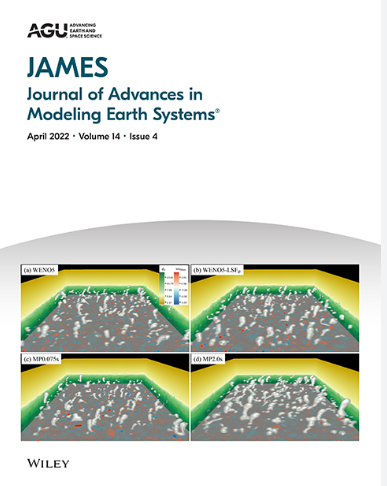评估现实与理想城市阵列流量的新几何参数
IF 4.4
2区 地球科学
Q1 METEOROLOGY & ATMOSPHERIC SCIENCES
引用次数: 0
摘要
城市异质性,如街道布局、建筑形状和建筑高度的变化,不能用理想城市环境分析中常用的密度参数来充分表示。为了解决这一缺陷并更好地模拟复杂城市社区的流场,我们提出了两个新的描述性几何参数,即对齐度和建筑面熵,它们分别量化了建筑间空间沿主导风向和建筑面朝向变化的连通性。然后,我们对101个城市布局进行了大涡模拟,包括具有均匀建筑高度的现实城市布局以及具有可变高度的理想建筑阵列,并评估了由此产生的体积流动特性。在现实社区的城市冠层流动类似于低城市密度的交错建筑阵列,但在超过λp ~ 0.25的情况下,现实流动对密度的变化不太敏感。我们进一步表明,与传统的密度参数(如平面和锋面面积密度)相比,平均对齐度(一种衡量街道峡谷中流动路径连通性的指标)能更好地预测冠层平均流动特性。在现实城市流中,弥散动量通量随建筑密度的增大呈明显的增加趋势,随建筑密度的增大呈明显的减少趋势,而在理想情况下则没有明显的增加趋势。这种独特的行为进一步强调了在实际城市布局中进行流量参数化评估的必要性。该研究提供了一种改进的描述城市布局的方法,可用于社区尺度的城市冠层参数化。本文章由计算机程序翻译,如有差异,请以英文原文为准。
Novel Geometric Parameters for Assessing Flow Over Realistic Versus Idealized Urban Arrays
Urban heterogeneity, such as the variation of street layouts, building shapes, and building heights, cannot be fully represented by density parameters commonly used in idealized urban environmental analyses. To address this shortcoming and better model flow fields over complex urban neighborhoods, we propose two novel descriptive geometric parameters, alignedness and building facet entropy, which quantify the connectivity of inter‐building spaces along the prevailing wind direction and the variation of building facet orientations, respectively. We then conducted large eddy simulations over 101 urban layouts, including realistic urban configurations with uniform building height as well as idealized building arrays with variable heights, and evaluated the resulting bulk flow properties. Urban canopy flow over realistic neighborhoods resembles staggered building arrays for low urban densities but becomes similar to aligned configurations beyond λp ∼ 0.25 where the realistic flow is less sensitive to changes in density. We further show that compared to traditional density parameters (such as plan and frontal area densities), the mean alignedness, a measure of connectivity of flow paths in street canyons, better predicts canopy‐averaged flow properties. Furthermore, for realistic urban flow, the dispersive momentum flux shows a clear increasing trend with building density, and a decreasing trend with alignedness, which is in contrast with idealized cases that exhibit no clear trend. This distinct behavior further highlights the necessity of evaluating flow over realistic urban layouts for flow parameterization. This study provides an improved method of describing urban layouts for flow characterization that can be applied in neighborhood‐scale urban canopy parameterization.
求助全文
通过发布文献求助,成功后即可免费获取论文全文。
去求助
来源期刊

Journal of Advances in Modeling Earth Systems
METEOROLOGY & ATMOSPHERIC SCIENCES-
CiteScore
11.40
自引率
11.80%
发文量
241
审稿时长
>12 weeks
期刊介绍:
The Journal of Advances in Modeling Earth Systems (JAMES) is committed to advancing the science of Earth systems modeling by offering high-quality scientific research through online availability and open access licensing. JAMES invites authors and readers from the international Earth systems modeling community.
Open access. Articles are available free of charge for everyone with Internet access to view and download.
Formal peer review.
Supplemental material, such as code samples, images, and visualizations, is published at no additional charge.
No additional charge for color figures.
Modest page charges to cover production costs.
Articles published in high-quality full text PDF, HTML, and XML.
Internal and external reference linking, DOI registration, and forward linking via CrossRef.
 求助内容:
求助内容: 应助结果提醒方式:
应助结果提醒方式:


